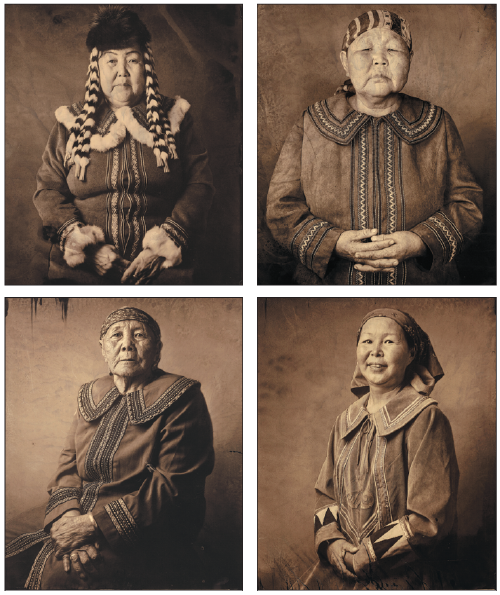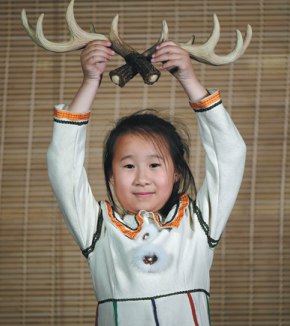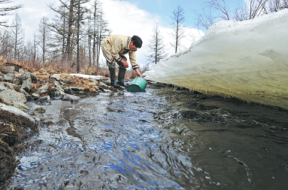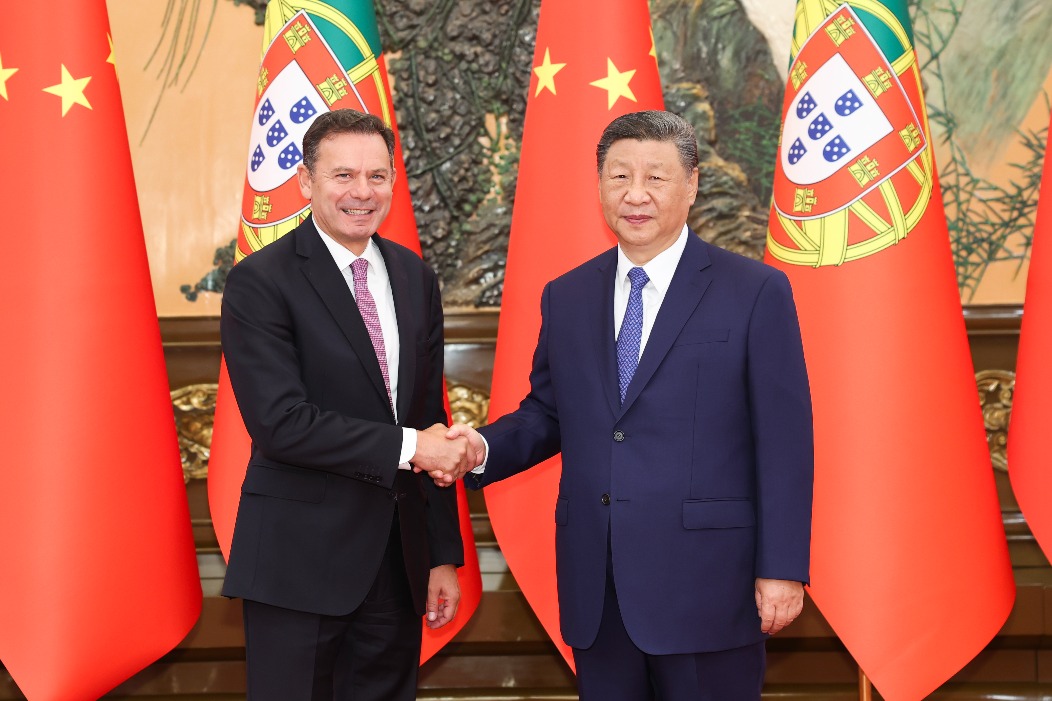China's last reindeer tribe

Editor's note: Photographer Wang Wei focuses his lens on the Ewenki people who live deep in the dense forests of the Greater Khingan Mountains. It took him nearly three years to record the last reindeer tribe in China, and present to the public a series of photographs and videos recording the life of the Ewenki people and their endangered culture.
Ewenki means "people living in the mountains and forests" in their ethnic language. There are three main branches of the Ewenki people in China, the Suolun, the Tunguska and the Reindeer Ewenki. Another unsourced explanation says that Ewenki means people living on the southern slopes. The above two explanations show that the Ewenki people are hunting people in the forest. With the course of time, some of the branches moved out of the mountains to the grasslands and river valleys, while some remained in the mountains.
The Reindeer Ewenki tribe living in Aoluguya Ewenki ethnic township, Genhe city, Inner Mongolia autonomous region, are a special ethnic minority group that entered the socialist society directly from the end of primitive society. Historically known as "the last hunting tribe", they are also the only ethnic group in China that raises reindeer and preserves the reindeer culture.
With the advancement of modern civilization, huge changes are taking place among the Reindeer Ewenki population and in the "cultural environment" in which they live. The continuation and development of their ethnic culture have been strongly impacted by modern civilization. Nowadays, there are only about 30 people representing the last generation of Reindeer Ewenki, and a very small number of them still maintain a relatively primitive and natural lifestyle. They are an important part of the Pan-Arctic Circle culture.
According to historical records, the ancestors of the Deer Ewenki people lived in the tundra highlands in the upper reaches of the Nercha River in the northeastern part of Lake Baikal in 2000 BC. By the 18th century, this branch of the Deer Ewenki people migrated along the Shilka River to the Greater Khingan Mountains on the right bank of the Ergun River. The Greater Khingan Mountains is located in the northeastern part of the Inner Mongolia autonomous region. The winter here is long and cold with the lowest temperature reaches minus 50 C.
The topographic feature consisting of high mountains and dense forests results in rich natural resources. Under such an extreme natural environment, the Ewenki people rely on herding. Reindeer raising and traditional hunting have secured them to a self-sufficient life in the mountains and forests. Eating animal meat, wearing animal skins, and living in the dense forest with traditional "Cuoluozi", spire house built with wooden poles, characterize their unique ethnic culture and lifestyle.
The Ewenki people cannot live without reindeer. Their clothes, shoes and hats, and the leather cushions in "Cuoluozi" where they live are all made of reindeer skin. The Ewenki people grow up drinking rich and nutritious reindeer milk. Their staple food is dried meat and reindeer milk served with Russian bread.
However, the modern society has been penetrated in all sides of the social life, which deeply impacts the progress of the Reindeer Ewenki people with their unique culture, and they are facing relentless challenges. The last old chief of the Ewenki tribe, Maria Suo once said,"As long as there are tribal elders and reindeers in the forests of the Greater Khingan Mountains, there will be ancient reindeer civilization." Today, the younger generation of the Reindeer Ewenki people have chosen modern lifestyle down the mountain, and they have gradually forgotten their ethnic language and traditional culture. The reindeer culture, hunting culture, birch bark culture and shaman culture handed down for thousands of years are gradually disappearing.










Today's Top News
- Xi sends congratulatory letter to 2025 China Intl Fair for Trade in Services
- China set to revise Foreign Trade Law to address challenges
- Xi's BRICS speech charts path forward
- Xi congratulates Kim on DPRK's 77th anniversary
- Sino-Portuguese ties hailed
- US 'Department of War' reflects its true role






























